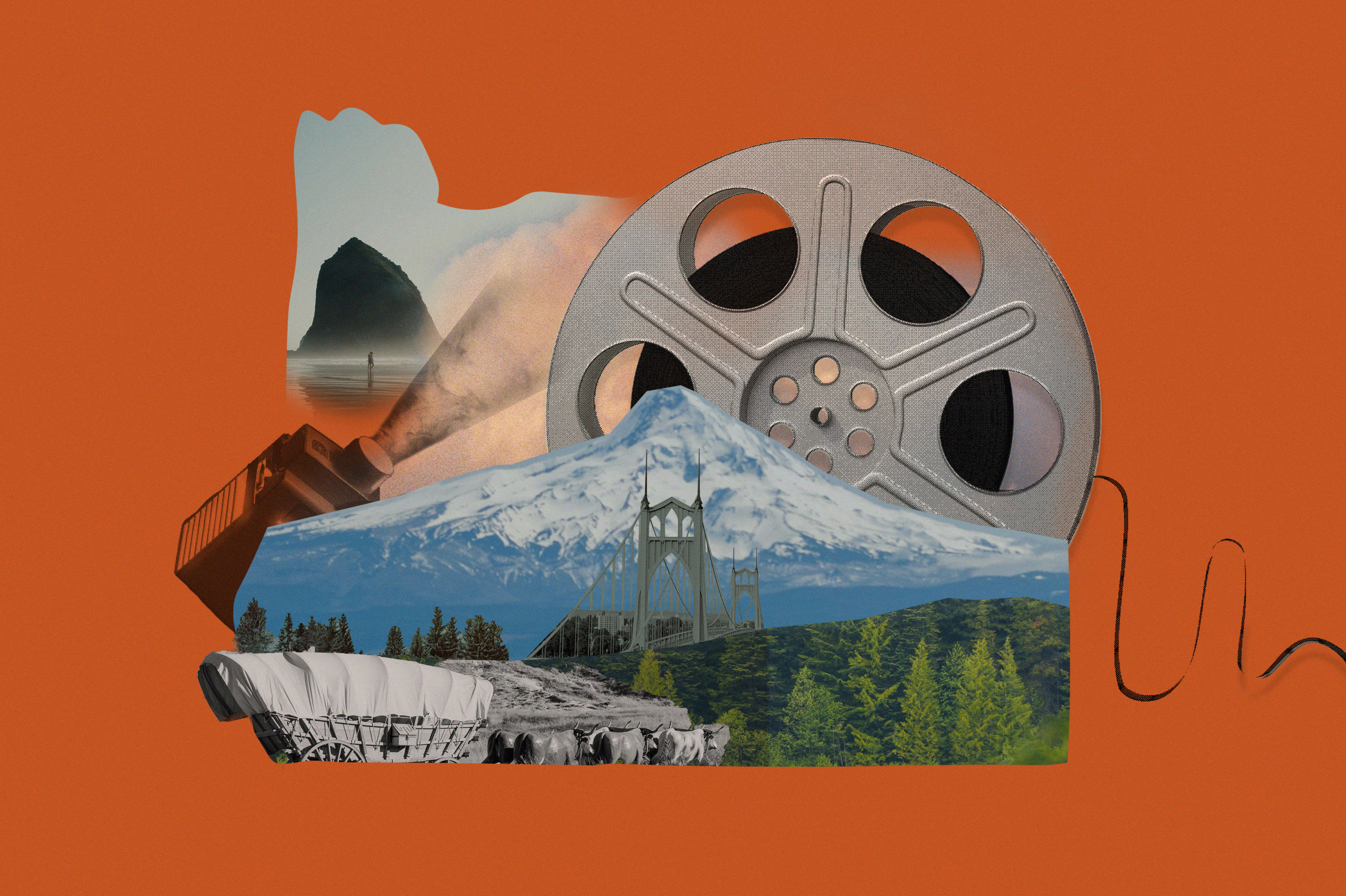In The Zone

Last year, thousands of children in China died in the Sichuan earthquake when their poorly constructed schools collapsed, even as government and private structures remained standing. The tragedy brought scrutiny to schools located in quake-prone communities around the United States, including Portland, which the Federal Emergency Management Agency ranks among the top forty cities most at risk for an earthquake.
Portlanders live the Cascadia subduction zone, a volatile seven-hundred-mile region along the Oregon Coast that also includes Northern California, Washington, and southern British Columbia. This zone hasn’t produced an earthquake in hundreds of years, but the US Geological Survey puts the likelihood of a quake in the next thirty years at 10 percent, and they expect it to be thirty-two times stronger than the one in China. Portland’s bridges will fall, structures will crumble, the granite and marble façades of downtown buildings will rain to the streets. The shaking will last not for seconds but for long minutes. Late next month, state Department of Emergency Management authorities will stage an earthquake drill on the educated premise of 750 people dead, 13,000 injured, and 23,000 in need of shelter—in Multnomah County alone.
When the real thing hits, schools will be especially vulnerable. A 2007 study by the state Department of Geology and Mineral Industries (DOGAMI) placed 1,018 of the 2,185 Oregon school buildings studied at a “high or very high risk” of collapse.
Yumei Wang, a geotechnical engineer and a national expert on earthquake mitigation and risk assessment, leads Oregon’s geohazards team for the Portland office of the DOGAMI. She participated in the 2007 schools analysis. We spoke with Wang about the massive quake coming our way, our woeful lack of preparedness, and why 2009 may be a watershed year for retrofitting schools with the kinds of materials that might save lives.
Portland Monthly: First of all, why will this earthquake that scientists are predicting be so huge?
Yumei Wang: Different kinds of earthquakes have different maximum capacity. About fifty miles off the Oregon Coast, there is a plate tectonic boundary that affects Northern California, Oregon, Washington, and part of British Columbia. An oceanic plate is being shoved underneath the Continental North American Plate. This is called the Cascadia subduction zone. We know from empirical data that subduction zone earthquakes produce the largest earthquakes in the world. The best known recent subduction quake is the 2004 Indian Ocean quake, magnitude 9.1.
PM: The geological record shows that Cascadia subduction zone quakes occur about every three hundred to eight hundred years. The last one occurred in 1700. Are we due?
Wang: This is an earthquake that will definitely occur. It’s like death and taxes—it’s gonna happen. We just don’t know when.
PM: How much shaking actually occurs during a magnitude 9 earthquake?
Wang: During the Indian Ocean quake, there were ten minutes of strong ground-shaking during the rupture, and those waves traveled out and continued to shake more in some areas than others. That area has also been plagued with major earthquakes, above a magnitude 8, since the original rupture. It’s the same subduction zone; the quake has just been traveling up and down.
PM: How would a major quake transform our landscape?
Wang: All of Portland is going to be shaken hard—that’s one thing I want to make sure is understood. There is going to be damage in some areas more than others. In the West Hills, we can expect to have earthquake-triggered landslides—we could have hundreds of landslides in the Portland Hills during a major quake. We would expect to have extensive liquefaction, where the ground turns temporarily into a sandy liquid along the Willamette and Columbia Rivers. So if you think of all the industry and development that we have there, those are going to be in trouble. You have petroleum tank farms, rail yards that are a vital part of our transportation; our fuel pipelines are there; our electrical transmissions cross in North and Northwest Portland. There’s also the airport and the levies that are vital to the airport. In areas like Old Town, which has very vulnerable buildings and where there is a concentration of older, unreinforced masonry buildings, we expect to have a lot of severe damage.
PM: You conduct post-earthquake investigations around the world and are an expert in seismic risk assessment. But you are also one of Oregon’s leading advocates for seismic safety in schools. Why the focus on educational facilities?
Wang: I focused on what would be an easy sell for the community and provide a huge amount of safety. And that includes public schools with a lot of children. Certain populations are more important to protect, and children are a vulnerable population.
PM: More than nineteen thousand children died after schools collapsed during the China earthquake, magnitude 7.9. Yet hundreds of other buildings remained standing, many located adjacent to the decimated schools. Will that happen here?
Wang: Earthquakes don’t kill people; bad buildings kill people. Our statewide study of K–12 schools found over one thousand buildings in the category of high or very high risk of collapse. There are about three hundred thousand schoolchildren in those one thousand buildings. If the earthquake hits today, we’re in trouble. Kids are mandated to go to school, and we’re sending them to schools that are not safe.
PM: A number of schools in Portland, including Alameda Elementary on NE Fremont Street and Llewellyn Elementary on SE 14th Avenue, fall under the “very high risk” category. Why are schools here at such high risk?
Wang: Only relatively recently did geologists figure out that Portland has a major earthquake hazard. It took a few years (in the early to mid-1990s) to have this reflected in the building code. There are about twelve hundred schools in Oregon that are over fifty years old and don’t take into account earthquake hazards as they are understood today. Many are constructed from brick, which cannot sustain strength in sideways shaking. Engineers have a joke: brick buildings are future patios. Great sense of humor, huh? But you see it over and over.
PM: The Sherwood School District, which has made retrofitting changes, has criticized your school safety report both for its methodology and its failure to consider some of the retrofits completed on individual schools. How do you respond?
Wang: When we did the study, we asked schools to provide a list of retrofitted schools, but not all the districts responded. After we issued the report, a lot of school districts went on the defensive. But a lot of schools had a different reaction, saying, ‘Gee, we want to start planning for seismic safety.’ We did a preliminary risk study, not a robust engineering study. Our results show that if the schools fell into a high-risk category we would recommend you hire a structural engineer to evaluate the school. Also, when districts say they retrofitted schools, they may have done only a partial retrofit.
PM: In 2001, Oregon voters approved a ballot measure to issue bonds for seismic upgrades to schools. But so far, no money has been allocated. What happened?
Wang: What happened was nothing happened. I chaired the state earthquake commission in 2000, when the legislature didn’t address this topic. Since then, we’ve introduced and passed many bills. Senator Peter Courtney (D-Salem) is the champion. He directed us to evaluate the schools and allow the Office of Emergency Management to create a grant program and divvy out bond money to school districts. This year, the governor’s recommended budget includes $15 million for upgrades to schools and another $15 million for hospitals, fire stations, police stations.
PM: Fifteen million doesn’t sound like very much.
Wang: It’s a drop in the bucket. But I’ve been killing myself to make this happen—it’s definitely a step in the right direction.
PM: Are other states that are at risk of earthquakes doing more than Oregon to shore up schools?
Wang: Yes. In 1933, after the Long Beach earthquake, California had a very progressive legislator who said seismic school safety was needed. They’ve been working on school safety since. California also has a department that manages all of the schools; they have architects and engineers reviewing plans to make sure schools are seismically safe. In Oregon, school districts are responsible for their own schools. I attended an earthquake engineering conference in Beijing in October, where I was asked to discuss the situation of Oregon schools. I was really shocked to hear that some of these second- and third-world countries are doing so much more than we are on seismic school safety. Iran is spending $4 billion on improving schools specifically for seismic upgrading and has allocated another $4 billion.
PM: In tough economic times, what kind of priority should we give to retrofitting schools, especially since we don’t know if the big one will hit today or a hundred years from now?
Wang: Look at the Oregon University System, which includes Portland State University. They already had a list of which buildings needed deferred maintenance; then they integrated seismic upgrades. So if you have a leaky roof, that’s when you tie the roof to the walls, which is part of a seismic retrofit. PSU prioritizes its upgrades based on seismic life-safety issues. We’d like to see that happen with K–12 schools. We know the earthquake is inevitable, and we know the damage is going to be bad. So how can we systematically be smart about being cost-effective and direct money in a continuous dribble until we improve the building stock so that we don’t have collapse?
PM: Until then, the situation you describe is very frightening. What can parents do?
Wang: In 2002, there was an earthquake in a rural part of Italy and almost 100 percent of the children died in one school. There were parents chained to the front of the school, protesting how this could happen. I can tell you, after an earthquake here politicians are going to stand up, slam their fists on their desks, and say, ‘We need to do this now.’ School districts have their own problems; seismic school safety is not on their radar screen. It’s expensive, and there isn’t much public demand by parents and others to fix things. We don’t want people to panic. One thing parents can do is talk with the governor’s staff and legislature about having a good grant program and having it funded. Parents can advocate to have their school mitigated. Right now.
PM: School earthquake drills teach kids to “duck and cover.” But if you know a building is going to collapse, isn’t it better to get out of the building as fast as possible?
Wang: The “duck, cover, and hold” drill assumes the building is still standing. That kind of says it all.




